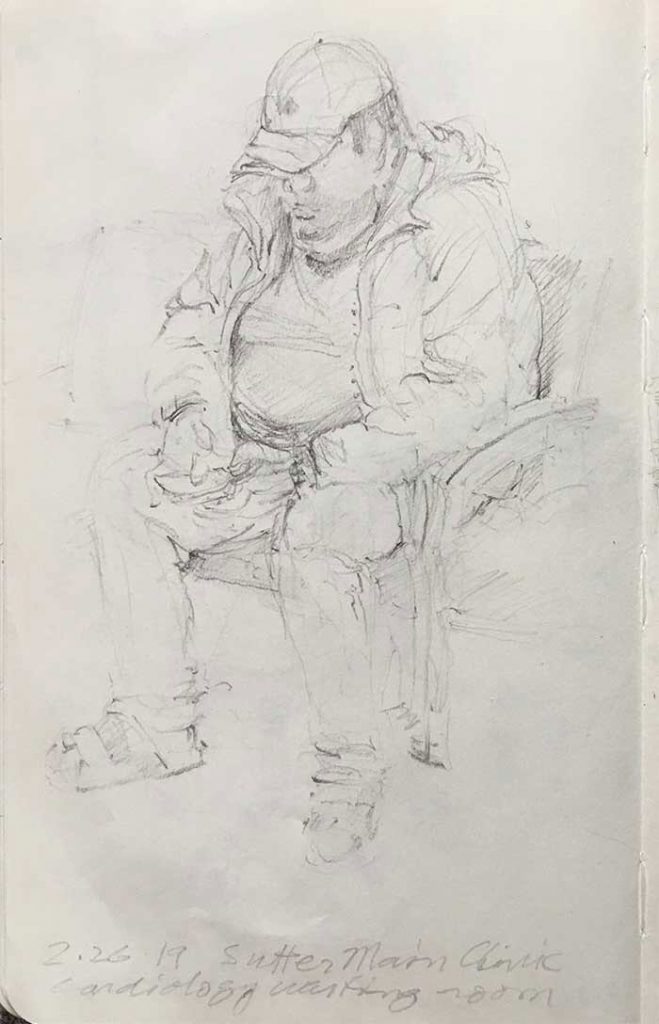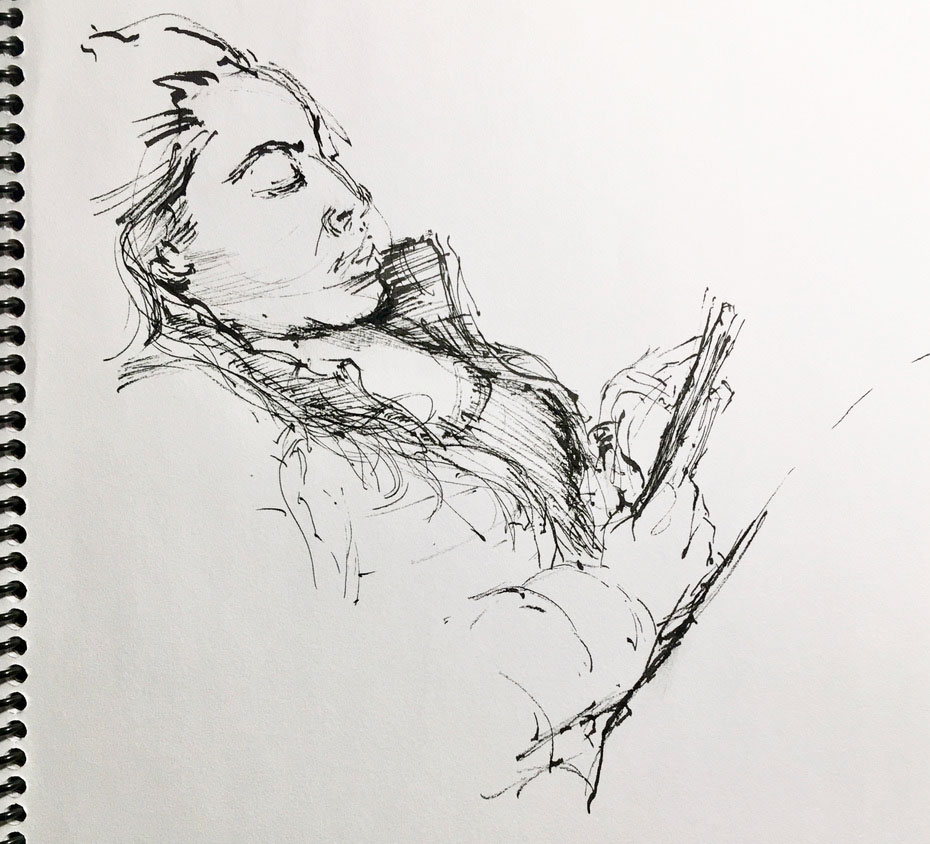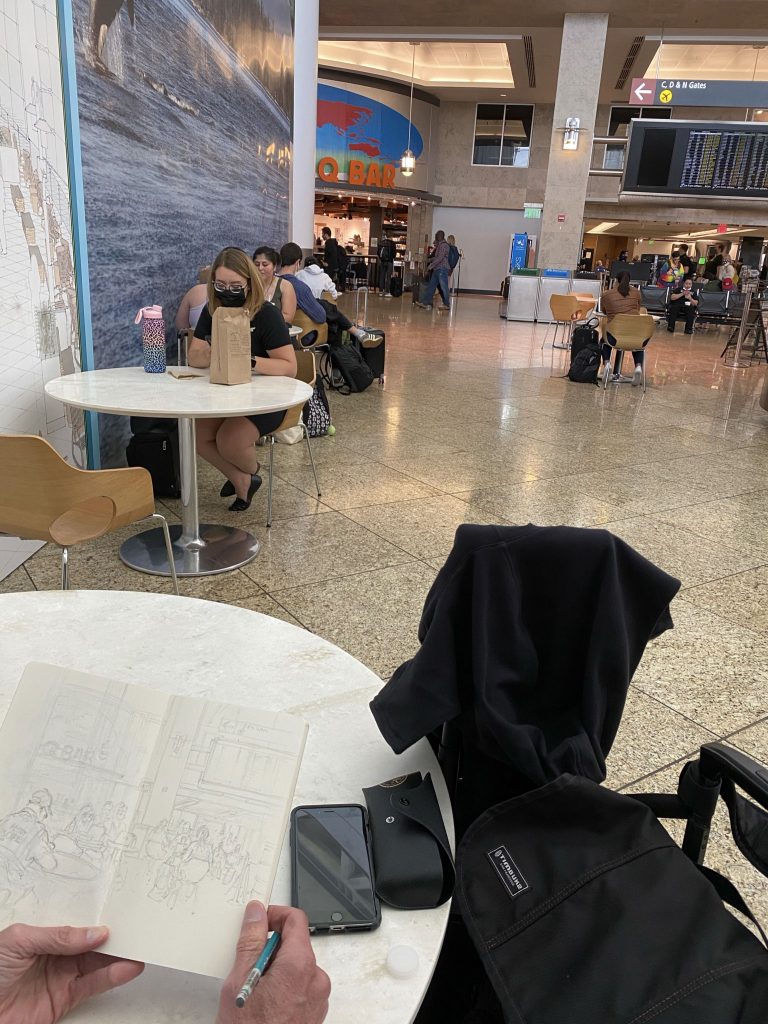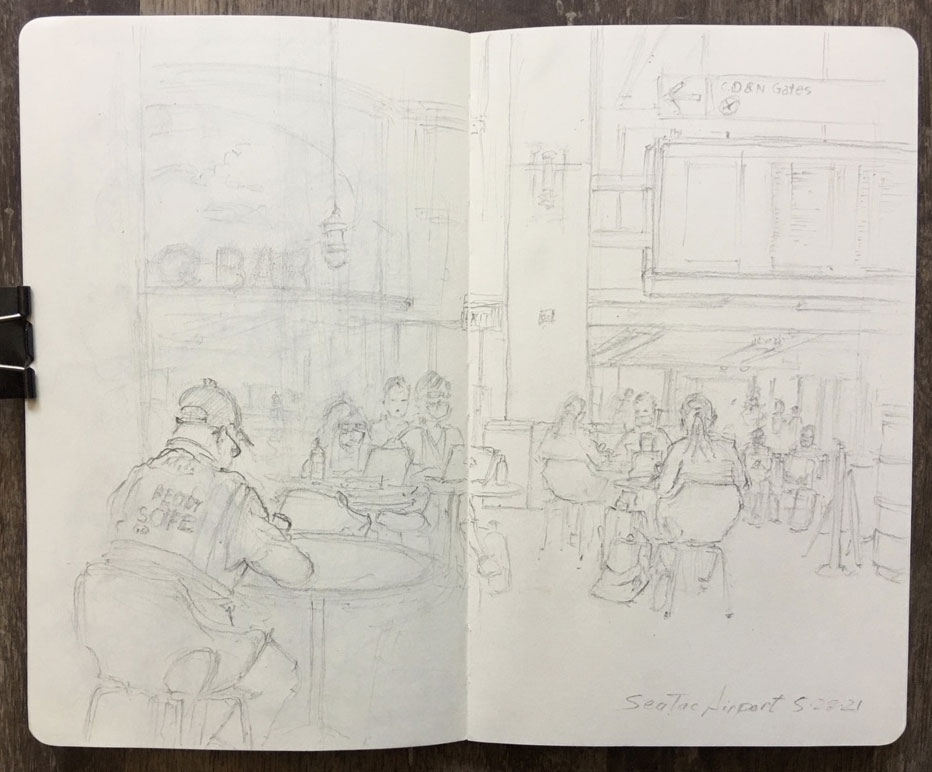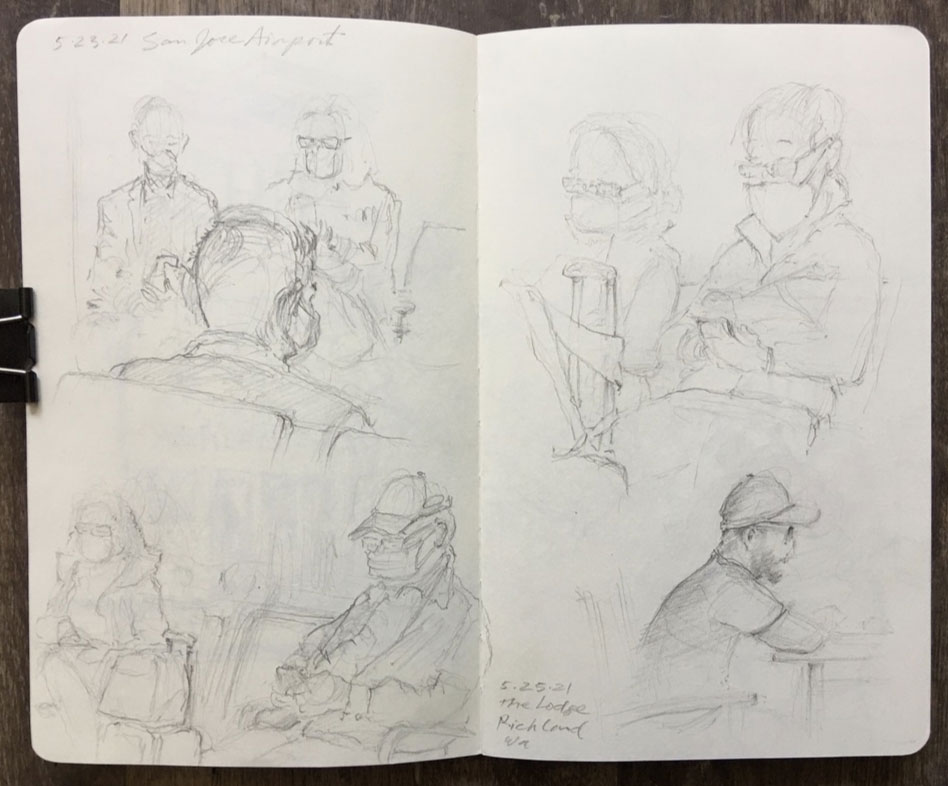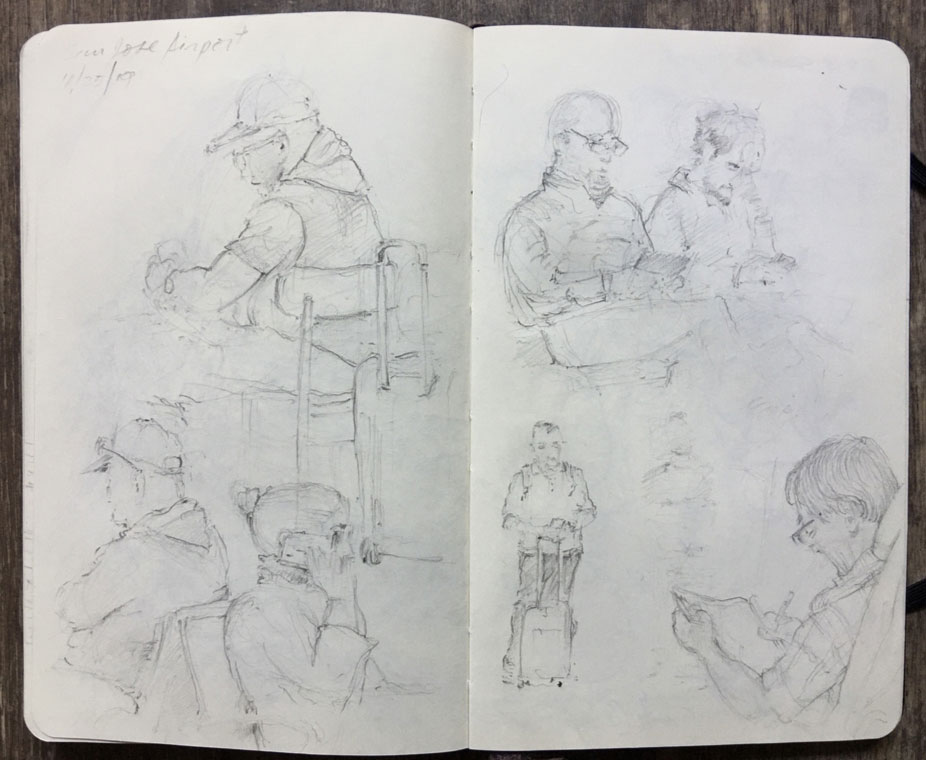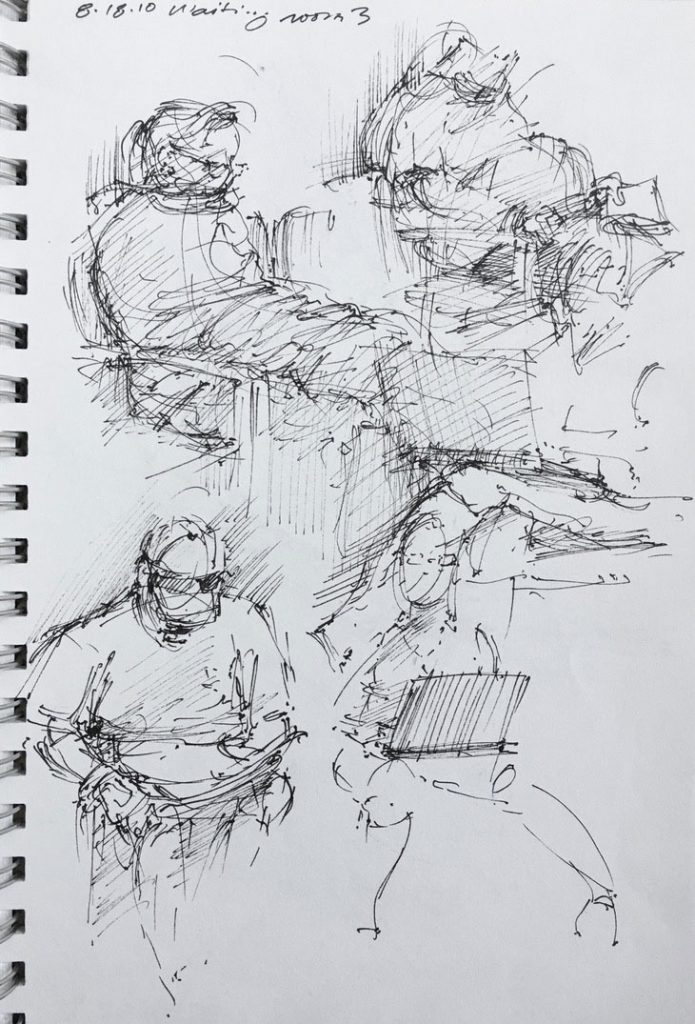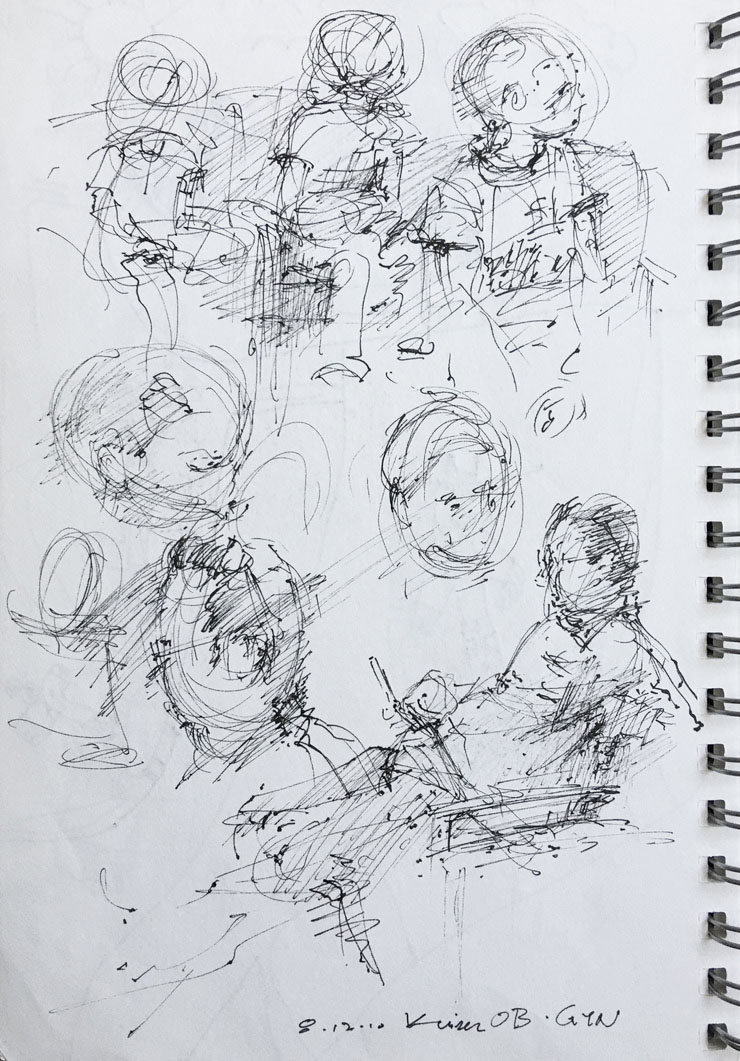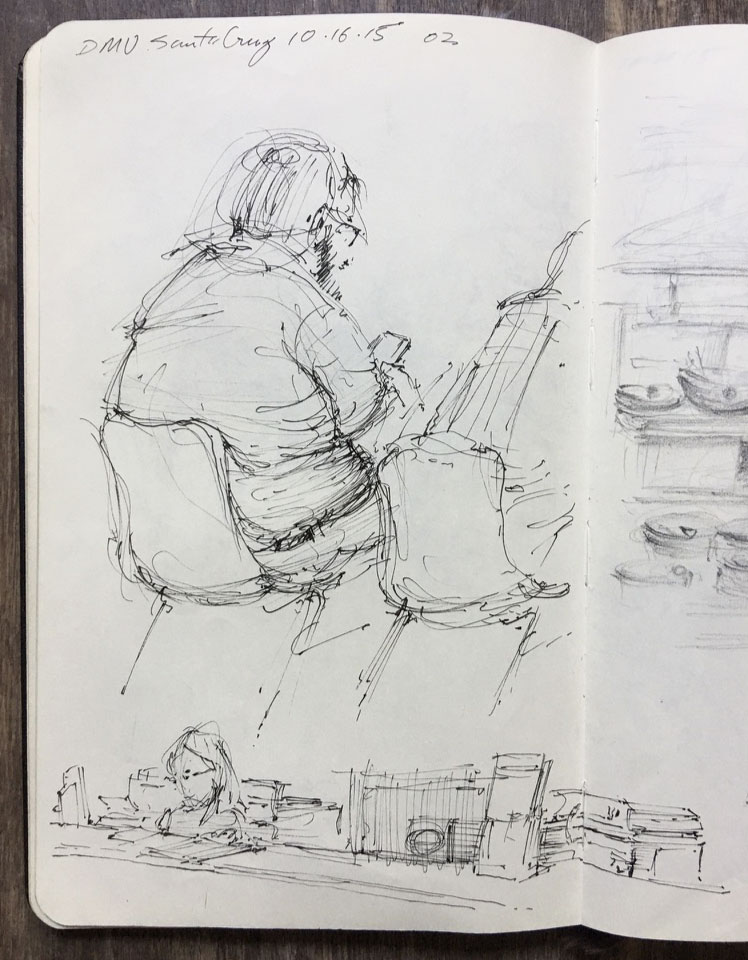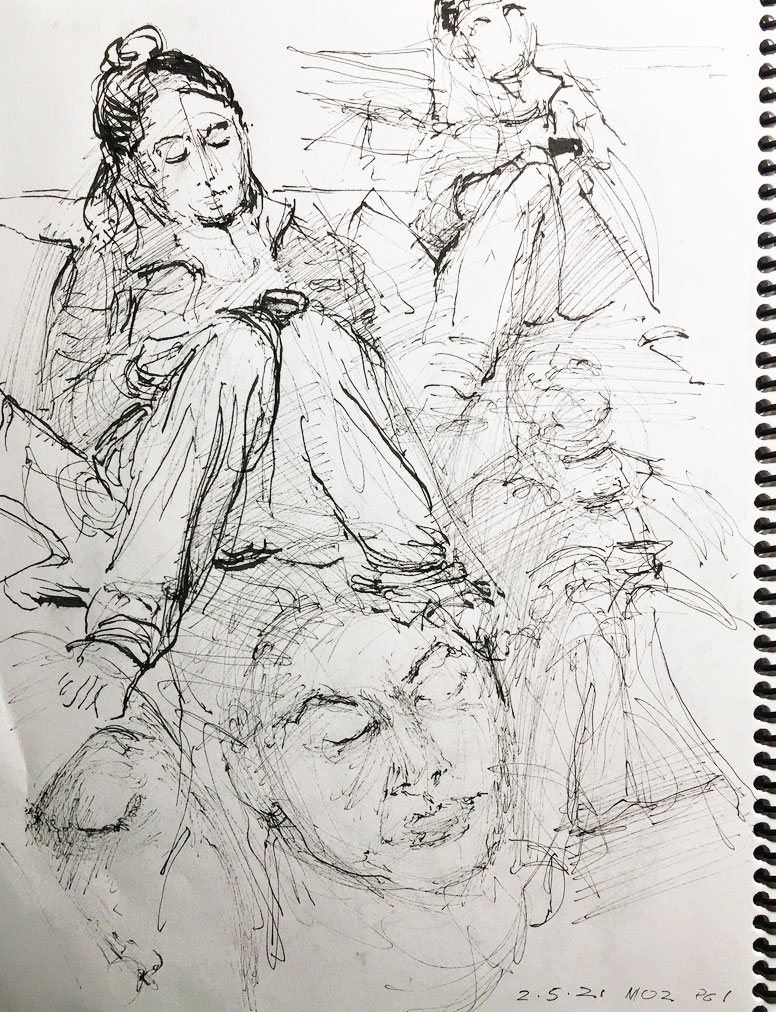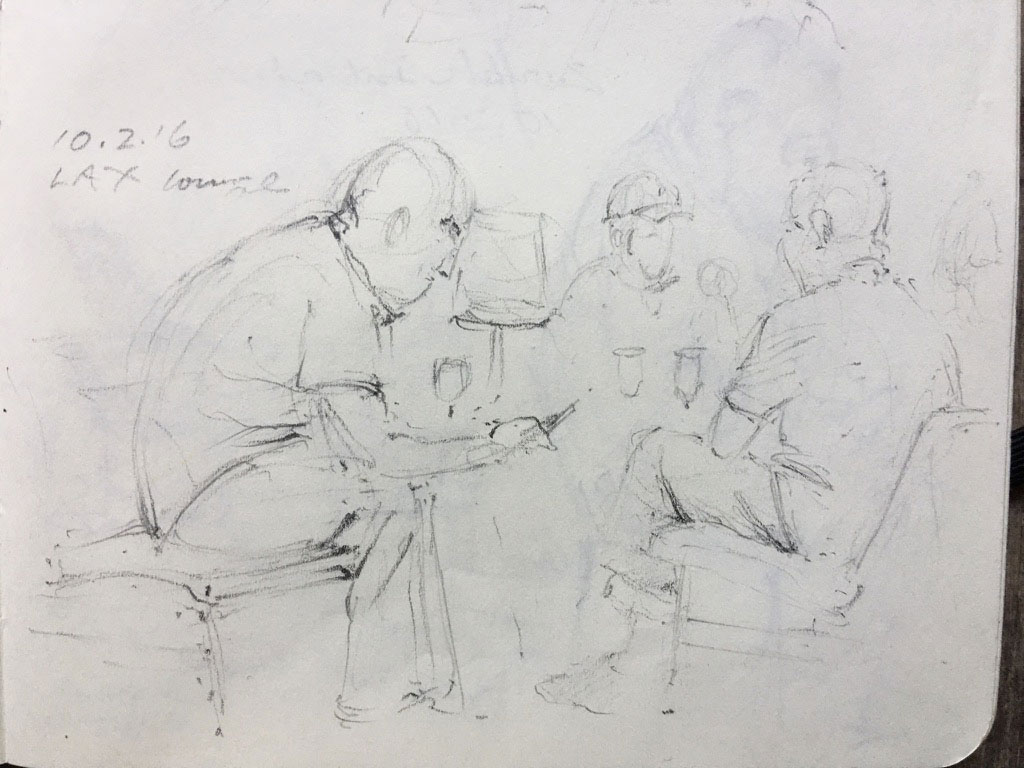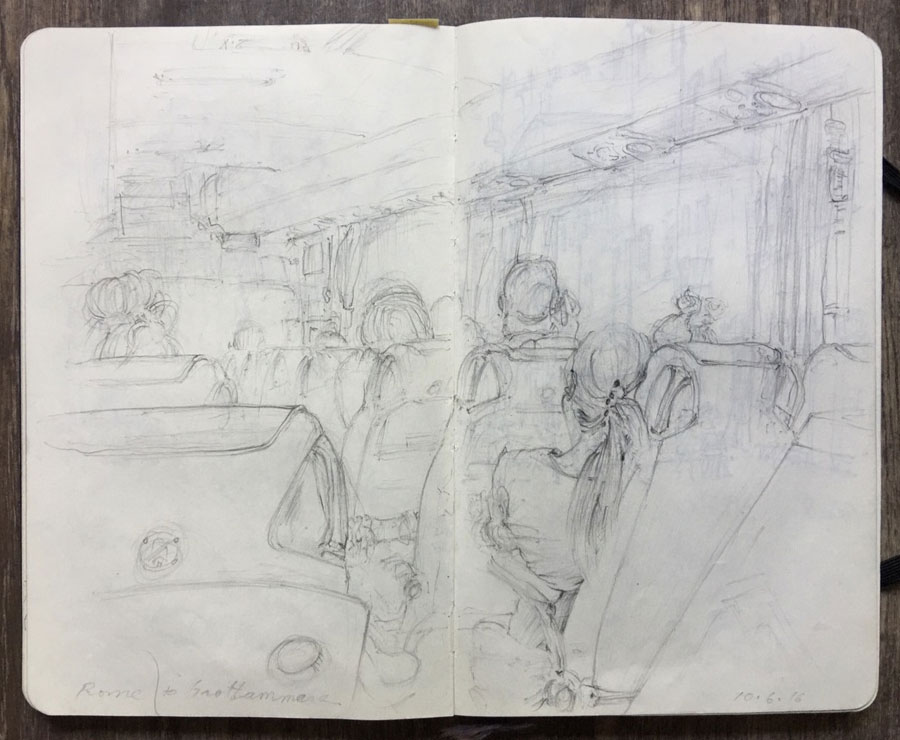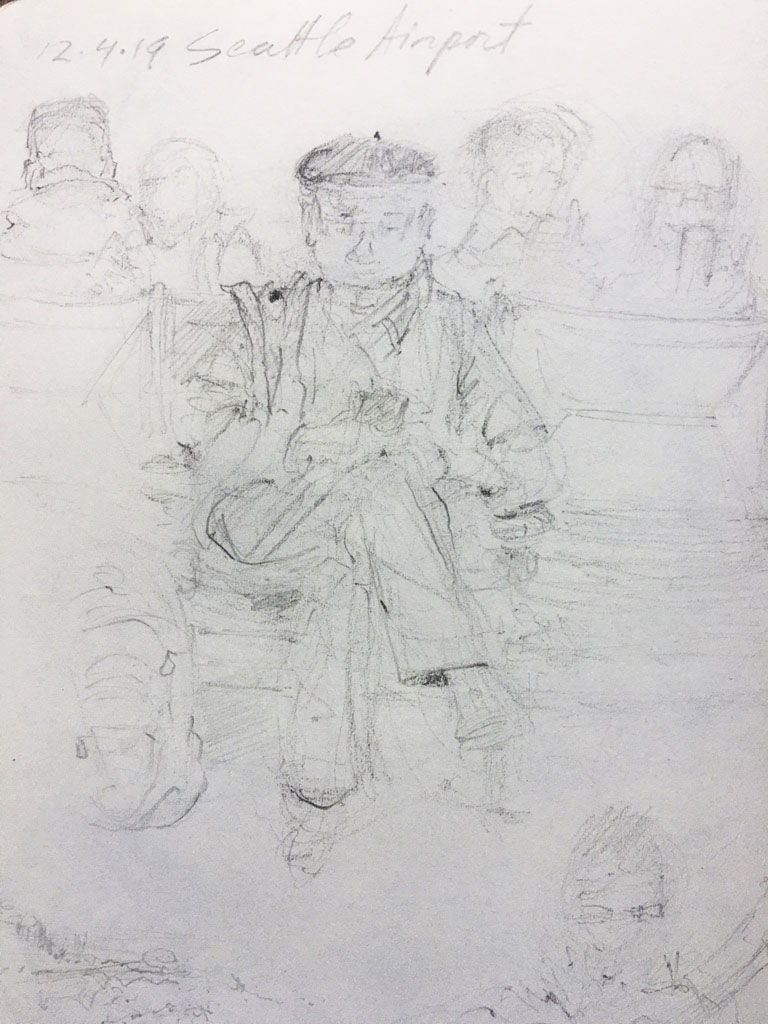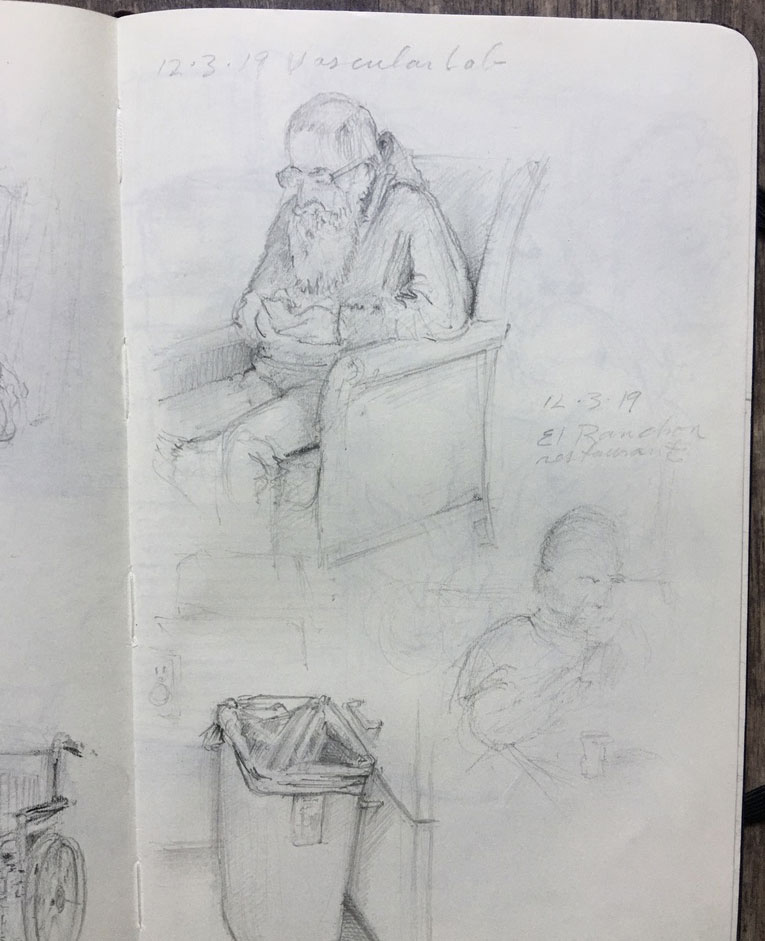With feet swollen tightly into Birkenstocks, he waited nervously for his name to be called. His rotund body was starkly juxtaposed with delicate fingers deftly scrolling a cellphone.
Except for a few empty chairs near this young man, the waiting room in the hospital’s cardiology unit was filled to capacity. I sat down just across from him to wait for my routine EKG.
The man seemed to be frozen in time, immersed in phone screen content. Not once looking up, he kept that phone scroll pose for nearly fifteen minutes as I sketched him with my 9B pencil.
Cellphone users are excellent models to draw, but capturing their poses can still be challenging. Here’s my approach for sketching them.
People constantly use their phones for seeking information and texting. At this very moment there’s probably someone near you using one. Take time to look up and observe.
Notice the angle of the woman’s body as she leans back to scroll her text messages (shown above). Let your eye travel from the tip of her nose to her right hand. You’ve just made your first crucial measurement between two “anchor points.” Seek to connect other anchor points and anatomical landmarks as you begin to sketch. Let your pen follow your eye.
It’s all a curious blur. Passengers fidget in modern chairs designed for short-term comfort. Chomping on bagels or sipping cafeteria espresso, they succumb to the ritualistic phone scroll trance. A short while later they hurry away to their destination, leaving an empty chair for the next weary traveler. So many people in airports, so little time to draw them.
To start the lounge scene at the Seattle/Tacoma airport (shown above) I sketched vertical and horizontal lines for large structural shapes such as foreground walls and the flight schedule board in the background; then I lightly mapped smaller shapes to suggest tables, chairs, and various fixtures. The stage was set.
As I sketched the scene, people came and went. But they all settled into using phones or laptops, giving my eye time to bounce between foreground, mid ground, and background. Transient figures became frozen in time.
During his coffee break, an airport employee (with baseball cap) phone scrolled at a table in the left foreground of the sketch which gave me time to refine his head and clothing details. Even though the airport employee left halfway through my drawing, the chair he sat in became a perspective anchor point for the rest of the composition. By the time a woman sat at the unoccupied table, I needed to catch my flight.
ABOUT 15 YEARS AGO I decided to level up to the challenges of sketching people in public. At first the process was frustrating and embarrassing as I struggled to capture my subjects accurately. Inevitably they’d catch me staring at them, prompting awkward encounters with total strangers.
Back in those days you’d only see the occasional flip phone being used. But I began to notice that people using laptops or reading magazines stayed occupied in one pose long enough for me to sketch them. As phones evolved to become the ubiquitous, attention-grabbing devices of today, I developed strategies to observe my subjects in a discrete and respectful manner.
Since people can unexpectedly change positions, I usually start by sketching minimal gesture lines to suggest the position of the spine, and movement of the person’s head and limbs. I call these sweeps of the pen or pencil “life lines.”
For the woman in the lower right of the 2010 sketch (shown above), I quickly swept life lines to show her legs supporting the computer in her lap. Moments later she shifted her weight and changed the pose, abruptly ending my study sketch of her. The gestural sweeps from the woman’s knees to ankles remained as unfinished measurement lines. It saves time to draw a line and measure simultaneously.
THE HUMAN FIGURE is complicated to draw. I like to simplify complexity by visualizing a figure’s essential lines and shapes as an abstract framework, followed by just enough loosely sketched contour edges to suggest the pose.
Quickly mapping out an abstract framework gives me the foundation of the figure and its relationship to the surrounding environment. If the pose is held long enough I can emphasize life lines for a man’s slouching spine, key facial expression features, and contour folds of his clothing (shown above) before he changes position.
During a 2016 bus ride through the countryside of Italy, I had 45 minutes to sketch an interior bus scene. I started by lightly blocking in angled perspective lines for the windows and seats, followed by basic shapes to position the people.
An important aspect of drawing cellphone models is being able to anticipate when they will fall out of a pose, and back into it again. I got lucky on the bus ride in Italy.
Many of the people were using cellphones, including the woman in the foreground (shown above). She mostly kept a reclined pose while using her phone. But whenever she shifted her body out of the pose, I’d widen my field of vision to sketch other areas of the composition. She kept returning to her phone scroll pose enough times for me to zoom in and study the texture of her hair.
Look for a pose that your subject will keep relaxing back into.
As a sketcher, I’ve learned that I have to relax into a pose too.
The chances of your subject glancing up from their phone and noticing you staring at them are quite high, especially when drawing a front-view portrait of them (shown above). Moving your head up and down while looking from sketchbook page to the model is an obvious signal that you’re drawing them, which can be an awkward moment for both of you.
I’ve learned to use peripheral vision. I try to keep my head in one position—angled somewhere between my paper and the model—while discreetly moving only my eyes back and forth. Practice spending as much time looking at your model as you do looking at what you’re drawing on the page.
Paging through my sketchbooks brings great pleasure. People and scenes I’ve sketched over several decades—including cellphone users—become a quilted narrative. What was the story of the young man in the cardiology waiting room? We were both waiting for an EKG test, but we traveled very different paths to the chairs we sat in.
Or how about the bearded man (shown above) in the University of Washington vascular lab waiting area? As I waited for my brother’s appointment to finish, I sketched the man phone scrolling. Certainly he would rather have been somewhere more enjoyable than sitting in that chair, solemnly listening for his name to be called.
While passing time in hospitals, airports, or the DMV I can only know the people in my sketchbooks through my fleeting traces of their impromptu poses. As they gazed into tiny virtual worlds held in their hands, unwittingly they became an artist’s fragmented memories, frozen in time.
Rob Court
Latest posts by Rob Court (see all)
- Drawing With Friends - April 11, 2022
- Frozen in Time: Cellphone Users as Models to Draw - April 8, 2022
- Getting Out & Getting Real - June 20, 2021
- Life Lines: Sketching the Unseen World of Movement - June 20, 2021
- The Ups & Downs of Urban Sketching - May 9, 2021
